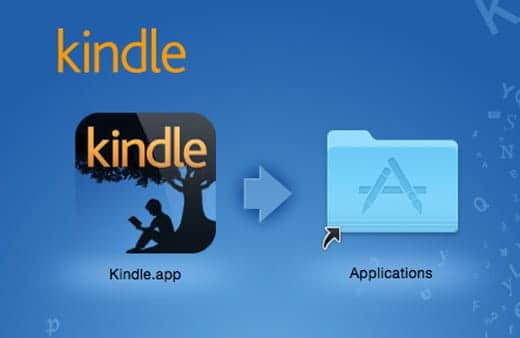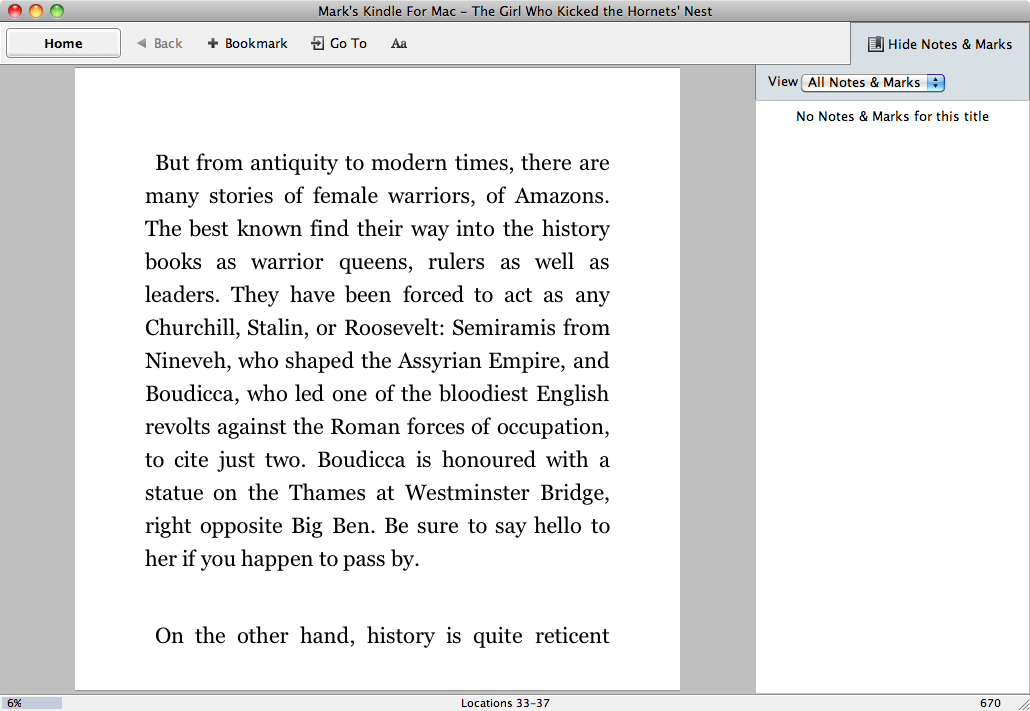

The Kindle for Mac application is straightforward and has basic options including, as outlined here, the choice of one or two columns. Truth be known, what I really needed from the beginning was a Mac netbook and now I have it. Reading in double-column view with full-screen turned on is very similar to the experience on the iPad and it's just another reason why the Air is gradually edging out the iPad as far as I'm concerned. My new 11-in MacBook Air with its 16:9-aspect screen is just about perfect for the Kindle for Mac app. It just needs a bit of attitude changing, in the same way that reading on the iPhone is against convention but equally attractive. While popular prejudice holds that a book must be held in the hand and at a reasonable distance from the eye, the new convention is that books can be read from a distance in the same way you watch a video. I even find that reading on my 24in Cinema Display is restful and thoroughly practical. This is a revelation and makes reading on a computer completely viable for the first time. There's also a handy full-screen button which hides the Mac menu bar so all you see is two pages of a book. Now, with adjustable line length, font sizes and side-by-side columns, the app can be customised to fit a near-full screen window. That has changed in the latest version of Kindle for Mac and the two-column view (similar to that in the pioneering iBooks app) makes a world of difference. The text is clear enough, but to achieve a satisfactory line length it's necessary to run the app in a window rather than full-screen.
#Amazon kindle for mac pro
Previously I've tried reading my Kindle books on the iMac or MacBook Pro and it wasn't the best of experiences. You can read a chapter here, a few paragraphs there and all your devices know precisely where you are up to.

Thanks to Whispersync, your Mac, your iPhone, your Kindle and anything else you own will be in sync. The first thing to bear in mind is that the Amazon Kindle eco-system works on almost every computing and mobile platform known to man.

In my case it's probably nearer to 99 percent. Kindle readers rule the roost, though, because they do 66 percent of all their reading in digital form. If you combine the netbook and laptop figures you have 45 percent of book reading being done on a computer rather than on a dedicated reader or phone/tablet. Strange, this: Research by Forrester last week showed that 35 percent of electronic book reading is done on a laptop, followed by 32 percent on a Kindle, 15 percent on an iPhone, 12 percent on a Sony e-reader and ten percent on a netbook. Enter the new updated Kindle for Mac* application which, for the first time, adds double-column reading. What you don't hear a lot about is reading books on a Mac or PC. And a growing number of keen readers are perversely attracted to the iPhone or iPod touch as the always-in-your pocket solution. Some swear by the iPad, others are convinced an e-ink reader such as the Amazon Kindle is the only answer. We've spent a lot of time discussing the ideal electronic device for reading books.


 0 kommentar(er)
0 kommentar(er)
